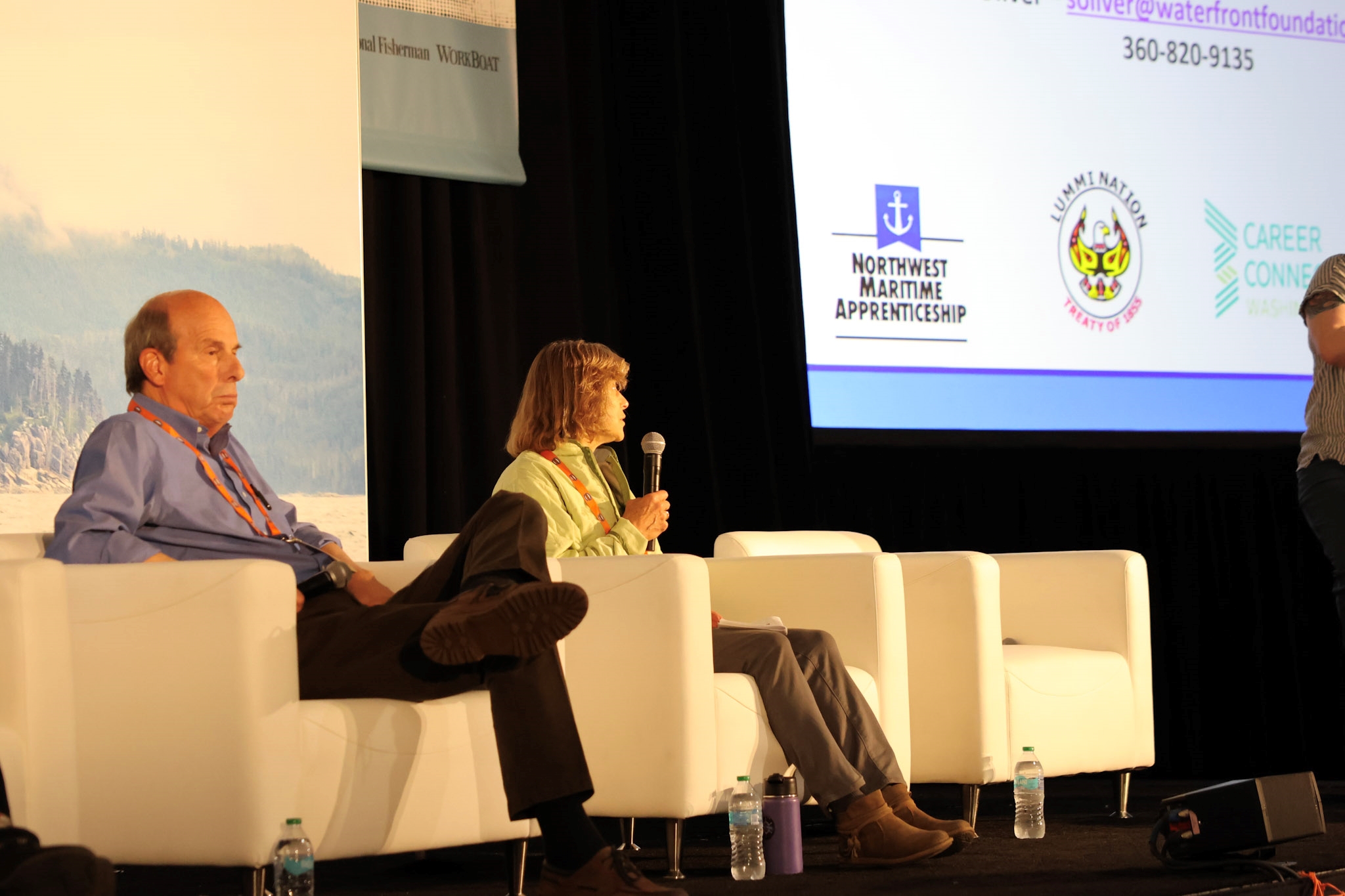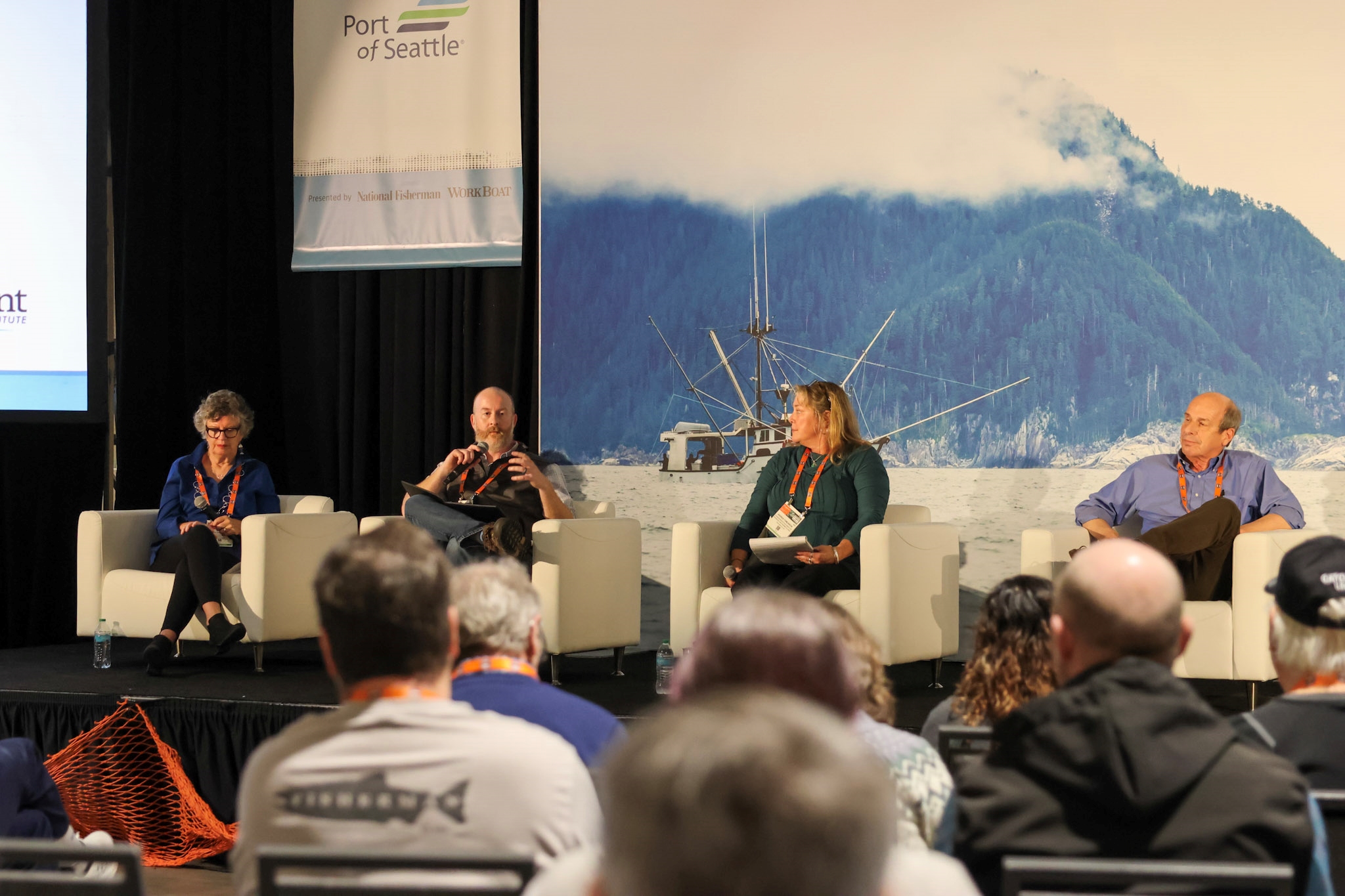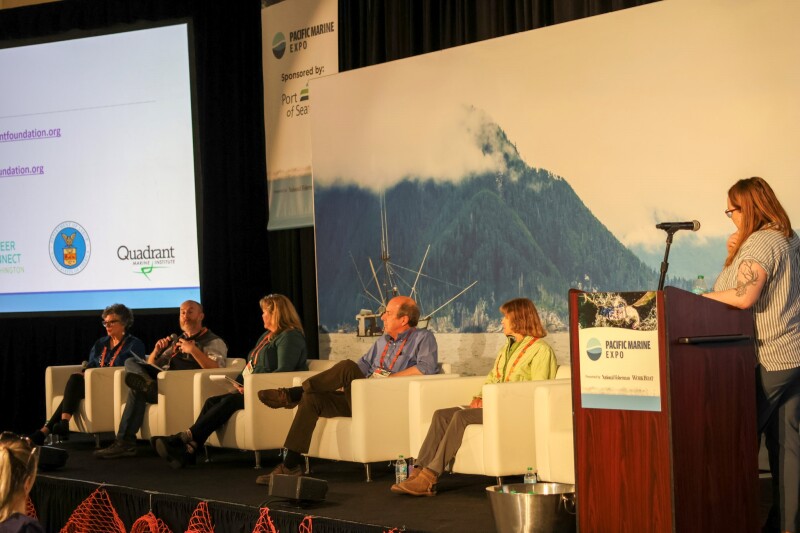From Alaska's icy waters to the Gulf of Mexico's warm tides, commercial fishing is critical to the economy and to support coastal communities.
With a graying fleet and evolving challenges, the industry’s leaders are stepping up to mentor, train, and inspire the next generation. The Workforce Development panel at this year’s Pacific Marine Expo brought together representatives from all corners of the U.S. to share innovative programs addressing these challenges within the industry. Hannah Heimbuch from Ocean Strategies moderated the panel and kicked things off by stating, “There's a lot of really great work happening in this space with people encouraging fishing as a livelihood. Today, our panel is just talking about different programs around the U.S. coast that encourage workforce development in the commercial fishing industry.”
“The Graying of the Fleet is Real”
Andrea Tomlinson, executive director of the New England Young Fishermen’s Alliance, underscored the national and global issue of declining participation in commercial fishing.
“The graying of the fleet is real. It’s a nationwide problem. It’s also a worldwide problem,” she said, adding that young people face barriers to entry, from financial constraints to a lack of mentorship. Her organization’s Deckhand to Captain training program provides trainees with critical skills like business planning, public speaking, and marine policy education.
Tomlinson’s efforts are paying off. “As of our 2022 trainees, we have three out of four in their own vessel. We just had this year’s 23-year-old trainee, Alex Varner, buy his boat two days ago. He’s diversifying into both lobster and ground fishing.”
Mentorship Making Waves

On the West Coast, Linda Behnken of the Alaska Longline Fishermen’s Association echoed Tomlinson’s call for more mentorship. Through the association’s Crew Training Program, Behnken has placed over 130 young people on boats, helping them learn the ropes in a safe, supportive environment.
“I find with the people who come to our program, they love the work, and they love getting out there and working hard,” she said. “They care about taking care of the fishery and the ocean. Many of them come back and ask, ‘How can I help?’”
Behnken’s program is making waves for inclusivity as well. “Over half of the young people we’ve placed have been women, and we’ve had women go on to buy their own boats.”
Coastal Collaboration in the Gulf

Eric Brazer, deputy director of the Gulf of Mexico Reef Shareholders Alliance, highlighted a unique approach in his region. His organization’s Gulf Commercial Fisherman Program recently graduated its first cohort in Texas and is now expanding to other Gulf states.
“We’ve taken a multi-faceted approach revolving around three core beliefs- opportunity, merit-based success, and community,” Brazer explained. The program connects participants with resources like red snapper quotas and cooperative ownership opportunities, fostering a sense of purpose within the community.
“We are working to instill in them that a community of fishermen is stronger when united than when working alone,” he added.
Building Boats and Futures in the Northwest
Deb Granger of the Northwest Maritime Apprenticeship brought a different perspective, focusing on the skilled trades that keep fishing fleets operational. Her apprenticeship program trains marine service technicians in everything from engine repair to vessel electronics, using a hands-on “earn while you learn” model.
“Our goal is to professionalize this career and elevate it,” she said. Granger also introduced the "Buoyant Beginnings" program, a partnership with the Lummi Nation that supports tribal and non-tribal youth entering maritime careers.
“It’s life changing. You should just see the light bulbs go off,” she said, recalling the empowerment students feel when figuring out what they like to do and that a maritime career could be a fit.
Breaking Down Barriers
Michael Nelson, chair of the Commercial Fishermen of Santa Barbara, shared the success of the Ocean Collective Project. This initiative combines infrastructure development with workforce training and academic collaboration, creating opportunities in the blue economy while addressing food security.
“Our commercial fishing association went to the city council and said, ‘You’ve been great—you’ve provided us with an icehouse, fish hoists, and subsidized commercial slips. But we’ve lost track of the working waterfront,’” Nelson shared. Instead of asking for handouts, the association proposed the Ocean Collective Project.
The project has already sparked significant progress. “We’re working with Santa Barbara City College on a curriculum for ocean industries and career training, and we’re engaging an engineering firm to develop gear storage, cold storage, and other critical infrastructure we haven’t had in decades,” Nelson explained.
Nelson highlighted the broader economic potential of the ocean industries. “An economist from UCSB stated that ocean industries in our area are already a $7 billion sector, with the potential to grow to $40 billion in 40 years.” That vision, Nelson noted, galvanized support for the project, showing how fishing is deeply tied to both economic resilience and food security.
Nelson also stressed the importance of changing the narrative around commercial fishing. “Those 150 fishermen in our harbor aren’t just fishermen. They’re small, independent, family-owned food production businesses. When we frame it like that, people understand our role in economic development and the community.”
He concluded with a statement on adaptability: “We’ve got to be flexible and keep our eye on the ball, whether it’s offshore wind, expanded marine protected areas, or other pressures on our industry. We’re showing that collaboration and leadership can lead to lasting solutions.”
A Call to Action
The panel showed that the future of commercial fishing depends on industry leaders stepping up to mentor young fishermen and advocate for the trade’s value.
Behnken urged the audience to “mentor a young fisherman, if you’re an established fisherman, and be a good advocate for our industry. Everybody has a role to play in taking care of this resource.” Tomlinson echoed the sentiment, adding, “Help educate people that these folks are really helping us out with our food security and helping us eat healthy.”
From Sitka to Santa Barbara, the Gulf to New England, this panel showcased how regional efforts can drive national change. As Brazer put it, “The future is shaped by those who are interested in building something bigger than themselves.”
Together, these leaders are ensuring that the next generation of fishermen isn’t just prepared to carry on the tradition, they’re inspired to make it stronger.







